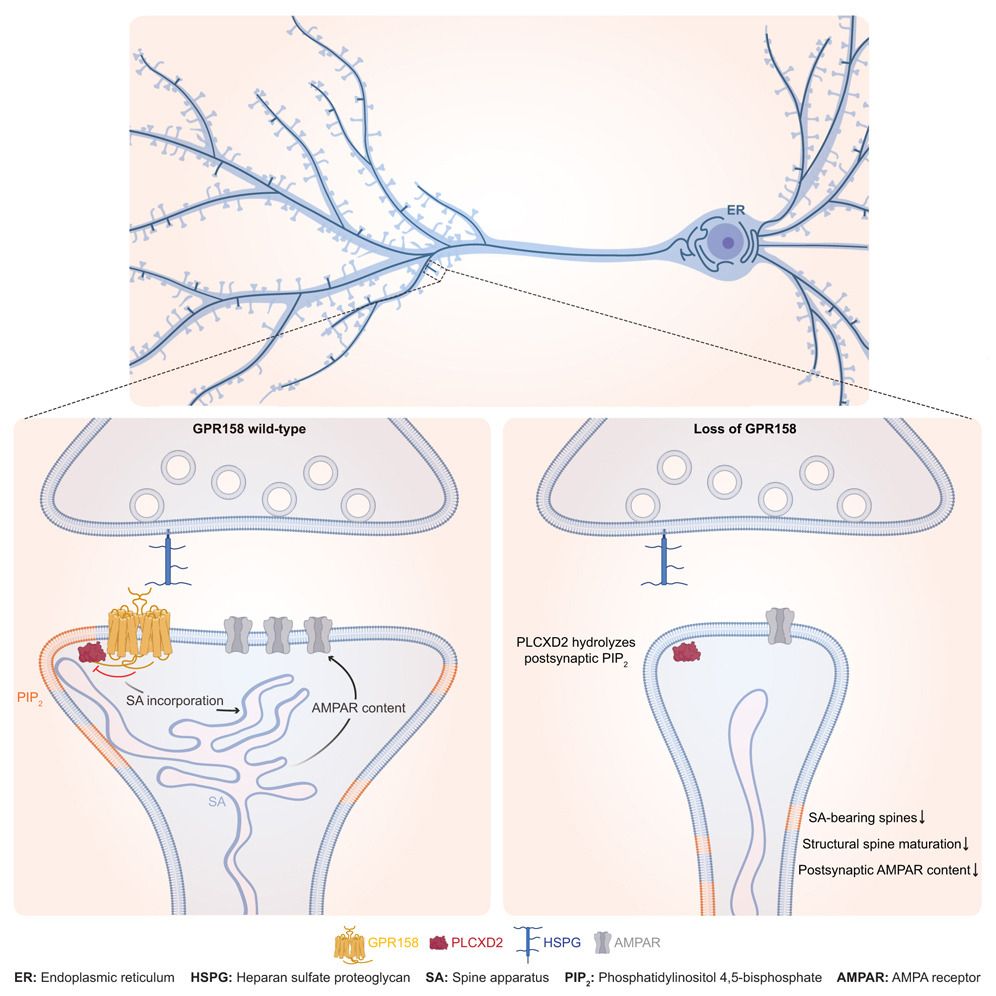
Glad to see our new paper finally out! We show how the GPR158 receptor controls synapse maturation and function by silencing an intrinsic inhibitory mechanism.
authors.elsevier.com/a/1l7HS5Sx5g...
Work from Ben Verpoort and colleagues, with special thanks to our collaborators.
20.05.2025 07:14 — 👍 35 🔁 7 💬 3 📌 0

Postdoc opportunity in the heart of Europe! Check out the flyer below.
Join our team on an international project with Anthony Holtmaat exploring synaptic plasticity and specificity in cortical and thalamocortical circuits.
08.04.2025 12:48 — 👍 21 🔁 18 💬 0 📌 2
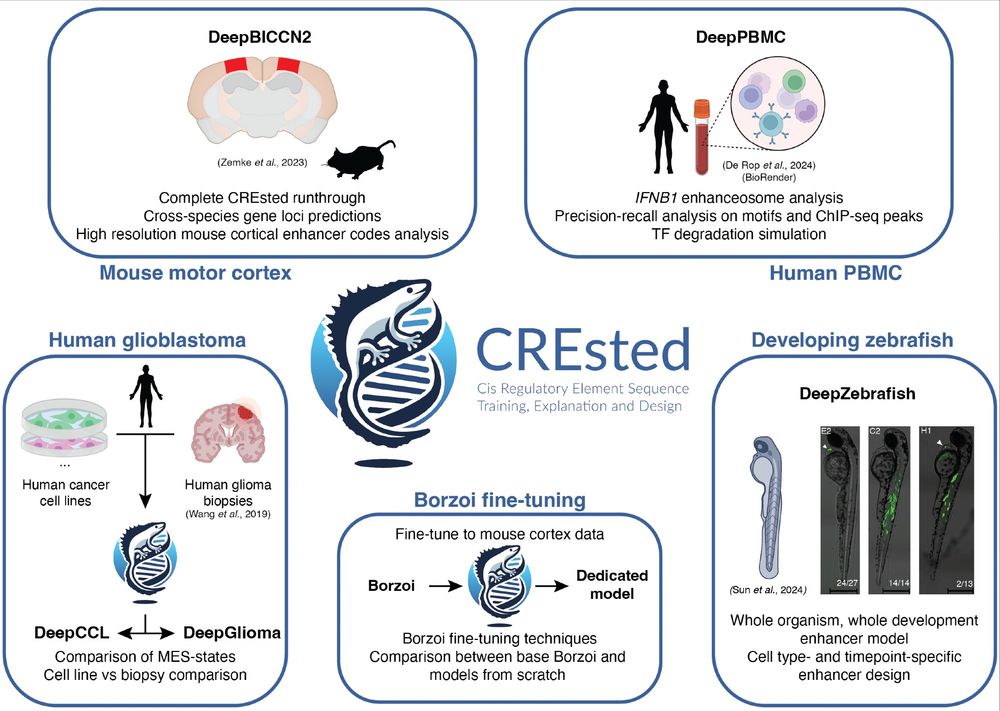
We released our preprint on the CREsted package. CREsted allows for complete modeling of cell type-specific enhancer codes from scATAC-seq data. We demonstrate CREsted’s robust functionality in various species and tissues, and in vivo validate our findings: www.biorxiv.org/content/10.1...
03.04.2025 14:30 — 👍 75 🔁 38 💬 1 📌 5
Finally, we would like to thank all our co-authors, the lab members of the De Wit and Aerts lab, and especially our PIs @steinaerts.bsky.social and Joris De Wit for guidance and support throughout this project (8/n)
31.03.2025 05:57 — 👍 2 🔁 0 💬 0 📌 0
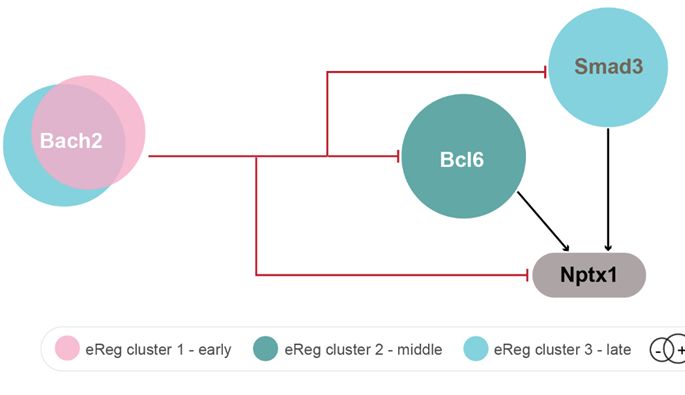
Finally, we use our prediction results to create a model of GRNs interactions surrounding Bcl6(+) and Smad3(+). Surprisingly, these predictions show sequential regulations, with early-active TFs delaying the activation of later GRNs and their putative synaptic targets (7/n)
31.03.2025 05:57 — 👍 1 🔁 0 💬 1 📌 0

Within the late-active GRNs, Smad3(+) is predicted to target several genes linked to synaptic organization and plasticity. We showed that loss of Smad3 in GCs alters inhibitory synaptic transmission without affecting the morphology of excitatory synaptic structures in these cells (6/n)
31.03.2025 05:57 — 👍 0 🔁 0 💬 1 📌 0
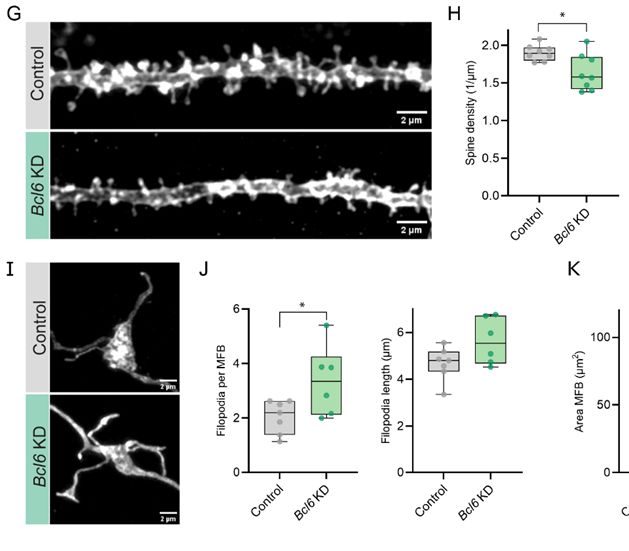
We tested the functional relevance of some of these GRNs in synaptic development of GCs. Within the middle-active GRNs, Bcl6(+) is predicted to target several synaptic genes. We found a novel role for Bcl6 regulating spine density and mossy fiber filopodia density in these cells (5/n)
31.03.2025 05:57 — 👍 1 🔁 0 💬 1 📌 0
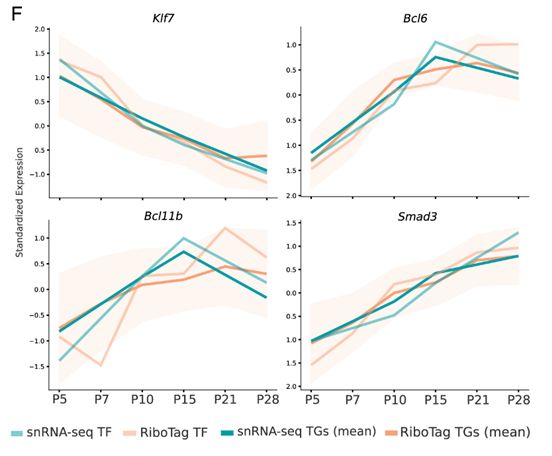
Next, we created a RiboTag dataset of the granule cells. Interestingly, we found matching profiles between translatome and expression in the multiome dataset for most of GRNs of GCs (4/n)
31.03.2025 05:57 — 👍 1 🔁 0 💬 1 📌 0
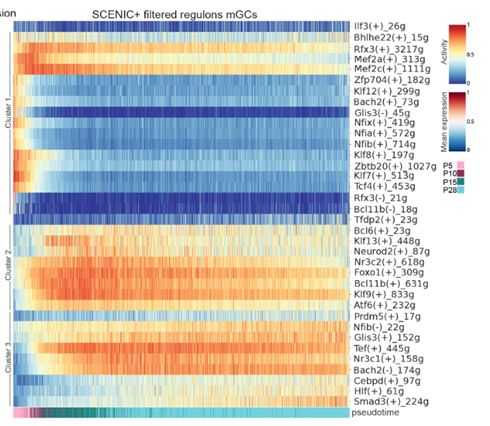
To map the GRNs that control these synaptic gene changes, we created a multiome dataset of the hippocampus (P5-28). Our analysis using SCENIC+ identified 36 eRegulons with distinct activity patterns in mature GCs, which were separated in early-middle-late depending on their timing of activity (3/n)
31.03.2025 05:57 — 👍 0 🔁 0 💬 1 📌 0
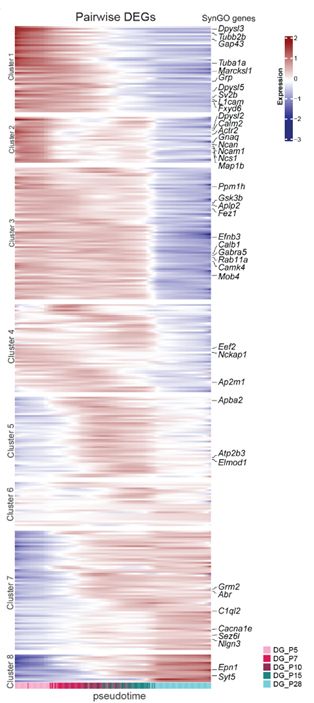
We used SMART-Seq2 sequencing to detect a high number of genes in mature GCs, and found that synaptic genes show dynamic expression patterns, with early-postnatal genes related to cell morphogenesis and late-postnatal ones regulating synapse organization and plasticity (2/n)
31.03.2025 05:57 — 👍 1 🔁 0 💬 1 📌 0
Very excited to share our new preprint together with @daniedaaboul.bsky.social, where we studied the gene regulatory code that hippocampal granule cells (GCs) use during synapse formation (1/n)
31.03.2025 05:57 — 👍 15 🔁 8 💬 2 📌 0
Autistic, mother of an autistic son, married with an just as autistic man. ADHD. Nerd. Interested in too many different things, for example science, tech, history, politics (especially the US) etc. Intelligence & empathy is everything, hate is nothing. 💙💙💙
A career network featuring science jobs in academia and industry.
Visit our platform at www.science.hr
Crafting no-code data analysis tools for life science research | Driving efficiency, reliability, & reproducibility | metofico.com
MSCA Postdoc fellow, Van Breusegem Lab, Oxidative Stress Signalling. VIB-UGent Center for Plant Systems Biology
Developmental Biologist, #CNRS researcher, studying morphogenesis, muscle regeneration and pathologies, and curious for all life sciences.
Lab website: https://helmbacherlab.org/
Post-doc in the Zuchero and Soltesz labs, Stanford Neurosurgery, studying neuron-oligodendrocyte interactions. Previously PhD in the Kolodkin lab @HopkinsNeuro
Stem cell biologist using in vitro brain models to study human brain development and disease
Our lab’s research is motivated by our interests in synapse biology and its profound disease relevance.
Professor, Neuroscientist, Group Leader @lmumuenchen.bsky.social interested in how your brain 🧠 converts feelings into actions. 🇺🇸 in 🇩🇪. @erc.europa.eu Awardee. annaschroederlab.com
Neurobiology of Autism and Schizophrenia, Molecular logic of neural circuits, Synapse Organization n Plasticity, Science advocate
Neuroscientist, Neurodegeneration, Regeneration
Neuroscientist. We study development and maintenance of synaptic connectivity.
VIB offers top-tier training and conference programs designed to inspire creativity, collaboration, and lifelong learning, enhancing research excellence and career development for scientists globally. Find out more: vibtrainingandconferences.be
🔬 Spatial Catalyst @ VIB Technologies
📍Ghent
Empowering researchers with expert spatial omics solutions – transcriptomics, proteomics & beyond.
🇸🇰 PhD student @ KU Leuven and VIB 🇧🇪
Genetics, Bioinformatics, and everything in between (she/her)








